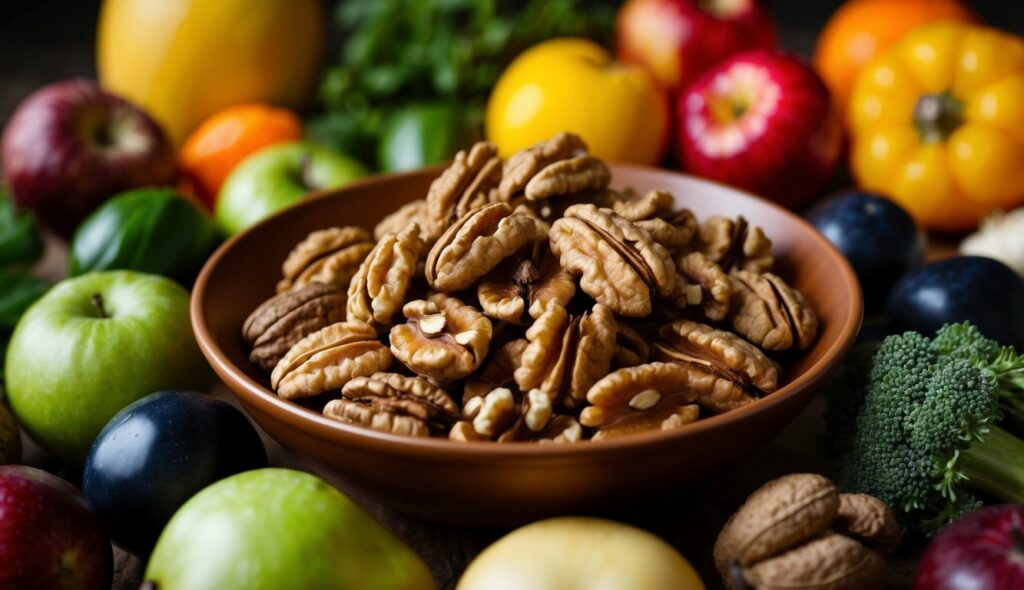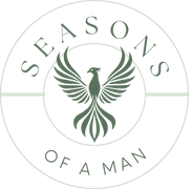Hitting a fitness plateau can be frustrating, especially when you’re putting in the effort but not seeing the progress you want. It’s a common problem for many middle-aged men, but it doesn’t mean your best days are behind you. You can break through a plateau by changing your workout routine, focusing on good nutrition, and staying consistent with your efforts.
Listening to your body and making small changes—like switching up intensity, trying new exercises, or improving your sleep—can make a big difference. With the right strategies, you can keep seeing results and feel stronger, no matter your age. Keep reading to learn more ways to push past your plateau and keep moving forward.
Understanding Fitness Plateaus in Middle Age
Fitness plateaus are common, especially as you reach your 40s and beyond. They impact your progress in different ways, affecting weight loss, muscle gain, and your performance at the gym.
What Is a Plateau?
A plateau happens when your progress stalls for several weeks, even though you’re sticking to your exercise and nutrition plan. For example, your weight may stay the same, your strength might not improve, or your body composition could become harder to change.
In fitness, plateaus are normal. Your muscles, metabolism, and even your motivation can all stall at times as your body adapts to regular stress. This isn’t a sign you should quit; it’s just your body signaling that it’s used to what you’re doing.
A weight loss plateau is one of the most common examples. You may be eating right and exercising, but the scale just won’t budge. Your Body Mass Index (BMI) may hover around the same number for weeks. Plateaus are frustrating, but they also tell you it’s time to review your habits and make some adjustments.
Why Middle-Aged Men Hit Plateaus
As you age, your body changes in ways that impact your fitness journey. Decreases in metabolism slow down how your body burns calories. Muscle recovery takes longer as hormone levels shift, which can make building or keeping muscle mass harder.
These changes can make it seem like your usual workout routines stop working. Your fitness level may remain steady or even drop, even if you haven’t changed your effort.
It’s also more common in middle age to face life stress, work, and family demands that can impact your sleep and recovery. Over time, these factors combine and make it easier to hit a plateau, especially if your workouts and nutrition stay the same for too long.
Signs You’ve Stopped Progressing
Knowing if you’ve hit a plateau starts with honest analysis. Some clear signs include:
- Your weight and body mass index (BMI) don’t change for several weeks
- Your workout performance (lifting, running, etc.) does not improve
- Your body composition (muscle vs. fat) looks or feels the same
- You feel more tired or less motivated during workouts
If you notice these patterns, it’s time to change up your routine. Keeping track of workout stats and measuring progress regularly can help you spot a plateau early, instead of wondering if you’re just having an off week.
Optimizing Workouts to Break Plateaus
Hitting a plateau in your fitness journey can be frustrating, but it’s possible to push through. Changing your workout style, using smart training techniques, and keeping things fresh can help you see results again.
Adjusting Your Training Program
If you keep doing the same exercises at the same weight, your body gets used to the routine and progress slows down. Change your training program every few weeks to challenge new muscle groups and keep things interesting.
Try changing your training frequency, the kind of exercises you do, or the number of sets and reps. If you usually work out three days a week, consider adding a fourth day or changing your rest periods. Periodization, where you plan different phases of training (such as focusing on strength for a month, then endurance), can also help you keep improving.
Be careful not to make big changes all at once. Start with small adjustments, listen to your body, and pay attention to how you feel after each session.
Incorporating Progressive Overload
Progressive overload means gradually increasing the stress placed on your muscles during workouts. This is key for getting stronger and building muscle, especially as you get older.
You can apply progressive overload by lifting heavier weights, doing more repetitions, or increasing your sets over time. Even small increases, like adding 2.5 pounds to a lift or one extra rep each week, make a difference. It’s important to track your workouts so you know when it’s time for an increase.
Pay attention to your form and don’t chase heavier weights if your technique suffers. Proper rest is also important, so your muscles can recover and grow stronger.
Cross-Training and Supersets
Cross-training mixes up different activities, such as strength training, cycling, swimming, or yoga. This helps prevent overuse injuries, keeps your workouts fun, and can improve your heart health. Switching up cardio with strength training keeps both your muscles and heart challenged.
Supersets mean doing two exercises back-to-back with no rest, like pairing push-ups with rows or squats with lunges. This increases workout intensity, saves time, and can help you break through a plateau. Use supersets to target different muscle groups or train the same area with two moves.
These changes keep your workouts from getting stale and can spark new progress in both strength and endurance.
Setting a Sustainable Workout Routine
Consistency in your workout routine helps you see steady progress. Find a schedule that fits your life and energy levels. For most middle-aged men, aiming for 3–5 workouts per week works well. Listen to your body and adjust if you start feeling tired or notice any signs of overtraining.
Balance your week between strength training, cardio, and flexibility exercises. Write down your workouts in a notebook or use an app to plan your days and track what you do.
Getting enough sleep, paying attention to recovery days, and fueling your body with nutritious food are just as important as hitting the gym. Making your routine fun and manageable will help you stay on tracklong-term.
Nutrition and Recovery for Consistent Progress

Eating the right foods and getting enough rest help you break through fitness plateaus. Adjusting what you eat and taking time to recover keep your body working at its best.
Dialing In Calorie Intake and Macronutrients
Middle-aged men often need fewer calories than younger men, but you still need enough energy for your workouts and daily life. If you want to lose weight, try eating in a small calorie deficit—eating fewer calories than you burn each day.
Aim for a balanced diet that includes protein, carbohydrates, and healthy fats. Protein helps build and repair muscle, which is important for muscle growth and strength. Good sources of protein include chicken, fish, beans, and eggs.
Carbohydrates give you quick energy for workouts. Focus on whole grains, fruits, and vegetables for better health and performance. Healthy fats, such as those from nuts, seeds, olive oil, and avocados, support hormone levels and joint health.
Use this simple table as a guide:
| Macronutrient | Good Sources | Role |
|---|---|---|
| Protein | Chicken, beans, eggs | Muscle growth & repair |
| Carbohydrates | Whole grains, fruit | Energy for workouts |
| Healthy Fats | Olive oil, avocados, nuts | Support hormones, joints |
Improving Dietary Habits and Portion Sizes
Healthy eating is not just about what you eat, but also about how much you eat. Paying attention to portion sizes helps prevent eating too many calories, which can slow down weight loss or lead to weight gain.
Simple tips include using smaller plates, chewing food slowly, and stopping when you feel satisfied, not full. Try to eat more home-cooked meals where you control what goes in your food.
Drink plenty of water throughout the day. Staying hydrated helps with muscle recovery and keeps your body running well during exercise. Avoid sugary drinks and limit processed snacks, which usually have excess calories but little nutrition.
The Importance of Recovery and Rest
Your body repairs itself and grows stronger when you rest. Getting enough sleep—about 7 to 9 hours each night—helps with muscle recovery, hormone balance, and weight control.
Plan for rest days between hard workouts. This gives your muscles time to heal, which helps you make steady gains. Stretching, walking, or doing gentle yoga on rest days can keep you active without slowing recovery.
Don’t ignore signs of tiredness or soreness. Pushing through pain can cause injuries and set back your progress. Recovery is as important as your workouts in helping you stay on track.
Leveraging Support and Professional Guidance
Getting past a fitness plateau often means changing your strategy and looking for outside help. It’s important to focus on solid advice, use reliable tracking, and avoid shortcuts that can cause harm or slow your progress.
Working with a Personal Trainer
A certified personal trainer can help you figure out why you’re stuck and show you the best ways to move forward. Trainers build workouts to fit your body and goals, adjusting activities to challenge weak areas and add variety.
Working with a trainer also gives you someone to check your form and help prevent injuries. They hold you accountable, track your progress, and push you when you need support to reach new levels. Many middle-aged men find that a trainer’s knowledge helps them overcome plateaus more safely and efficiently.
You can meet with a trainer in person or online, depending on your schedule. Even one or two sessions each month can make a noticeable difference in your results.
Tracking Progress and Making Adjustments
Tracking your workouts helps you spot patterns or changes in your progress. You might use workout logs, fitness apps, or even simple charts to record exercises, weights, sets, and reps.
When you analyze these numbers, you can tell if you’re actually improving or just repeating the same routine. Key tracking tips:
- Write down every workout
- Note how you feel and how hard you work
- Review your progress every few weeks
If you see your progress slowing, it’s time to switch up your plan. Try using heavier weights, more sets, or add new exercises. Don’t be afraid to make small changes and see how your body responds before committing to something new long-term.
Avoiding Crash Diets and Risky Shortcuts
Crash diets or extreme shortcuts can seem tempting when you hit a plateau, but they can be harmful. Rapid changes to your eating plan can lower your energy, slow your metabolism, and make you lose muscle.
Instead, focus on steady, balanced nutrition. Make small, healthy changes that you can maintain. This approach supports lasting progress and helps prevent injuries or illness.
If you’re thinking about major diet changes, talk to a professional—like a registered dietitian—before starting. They can guide you on safe ways to reach your goals without risking your health. Avoid pills, fad diets, and untested supplements. Consistency and smart choices will help you move past a plateau in a safe way.










